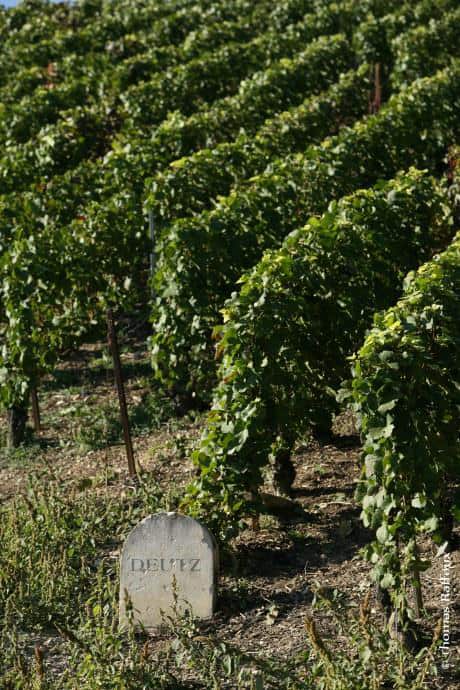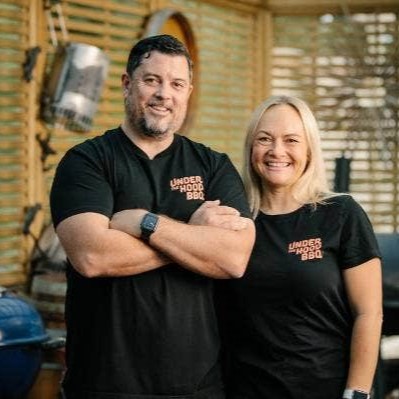
Champagne Deutz Harvest Report 2019
2019 Harvest
Temperature variations, ripening, the winegrowing cycle… All together an unprecedented harvest
The buckets and secateurs have been put away again and the grape pickers have now deserted the vineyards.
After 11 days of harvesting in summer-like weather, the grapes, the fruit of an entire year’s work in the vineyards, have been safely brought home. The yields, considering the vagaries of the weather over the year, are decent and the quality, so important to Maison Deutz, looks to be very good. The alcoholic degrees are high and the clusters are in perfect health: Michel Davesne, cellar master, Olivier Bernard, his deputy, and their teams have some excellent raw material to work with.
A quick overview of a year which was, once again, extraordinary for several reasons
The winter was mild and generally dry. There was a deficit in groundwater replenishment as we went into the spring. In the second ten days of February, spring seemed to have arrived and we even experienced record temperatures: +2.6°C above average temperature over the month! Fortunately, the temperatures dropped at the end of February and the seasonal series of sudden downpours commenced as we came into March.
The average dates of bud burst were 8th, 13th and 14th April for the Chardonnay, the Pinot Noir and the Meunier respectively, dates which are close to the ten-year average.
The cold temperatures at the start of April soon had us forget the warm weather in February, but they also put the vine at risk: the frost hit for the first time on the night of 4th to 5th April, then several times between 11-15th April. The first assault was the most destructive due to the high air humidity at the time. Areas in the Côte des Blancs were the hardest hit and 30% of the buds were destroyed in our vineyards in Villeneuve and Mesnil-sur-Oger. The damage was only minor in other areas.
May and June brought some stormy weather and the thermometer was yoyo-ing up and down. Flowering started fairly early in the earlier plots but a cooling of temperatures in the second week in June upset the anthesis (*). In the end, the flowering was late in certain plots and struggled in others. (*) Anthesis is the flowering period during which a flower is completely open and functional.
It was only from 15th June, when the barometer was kinder again, that the cycle accelerated. The flowering then completed quickly and in heatwave temperatures.
We have officially recorded an average flowering date of 20th June. From this date, Patrick Boivin, our vineyard director and Cédric Georget, his right-hand man, were able to forecast that we would be harvesting in the second 10 days of September. This came after two years of early harvests, in 2017 and 2018.
We soon recovered from the Downy Mildew, which appeared at the end of May/start June, and the threat of Powdery Mildew, which was high this year, was well contained.
In the middle of July, an unprecedented heatwave, with temperatures as high as 42°C, caused significant scalding. The grapes and leaves were literally cooked under the scorching sun. The losses were estimated at at least 15%.
Ripening got off to a good start in August. The first samples taken in mid-August already showed potential high alcohol levels.
The ripening continued at a breakneck speed. Unheard of. Unprecedented! The refractometer showed a 2.6° increase in potential alcohol for the Chardonnay in the last week of August alone!
The harvest initially forecast for around 15th September was quickly brought forward. The duration of the flowering/harvest cycle is now the shortest on record: around 83 days, i.e. a week less than usual. Like a large part of the rest of the Champagne region, the harvest kicked off in Champagne Deutz’ vineyards on 10th September.
The maturity of the grapes was generally homogeneous and we could start harvesting in all the terroirs virtually simultaneously. The grape pickers exchanged raincoats for sun hats and sunscreen for the duration of the harvest. The grapes’ level of maturity continued to increase and we had to manage the order of plot picking efficiently. Fortunately, we were able to do this thanks to the excellent health of the grapes and the summer-like weather during the day combined with clear, cool nights.
In the Deutz vineyards, we recorded an average yield of close to the 10,200 kg/ha established by the Champagne Interprofession (wine council), particularly for the noble Pinots Noirs from Ay (e.g.: our vines in the Côte Glacière and Meurtet). But there were a few disparities, such as certain “grands blancs” crus where the yield did not get above 7,000-8,000 kg/ha in certain plots.
The degrees in the musts are high with an average of 10.90°. The acidities are coming in at 7.4g/l on average and, well balanced thanks to a fairly high level of malic acid.
In the weeks and months ahead, once the fermentations are over, the approximately 150 wines of different varietals and terroirs will be carefully assessed in the vatroom, then in Champagne Deutz’ Salon des Oiseaux. Depending on their characteristics, they will then be directed toward one or other of the 14 champagne compositions that our chairman and CEO, Fabrice Rosset, and his team have created over the years.




